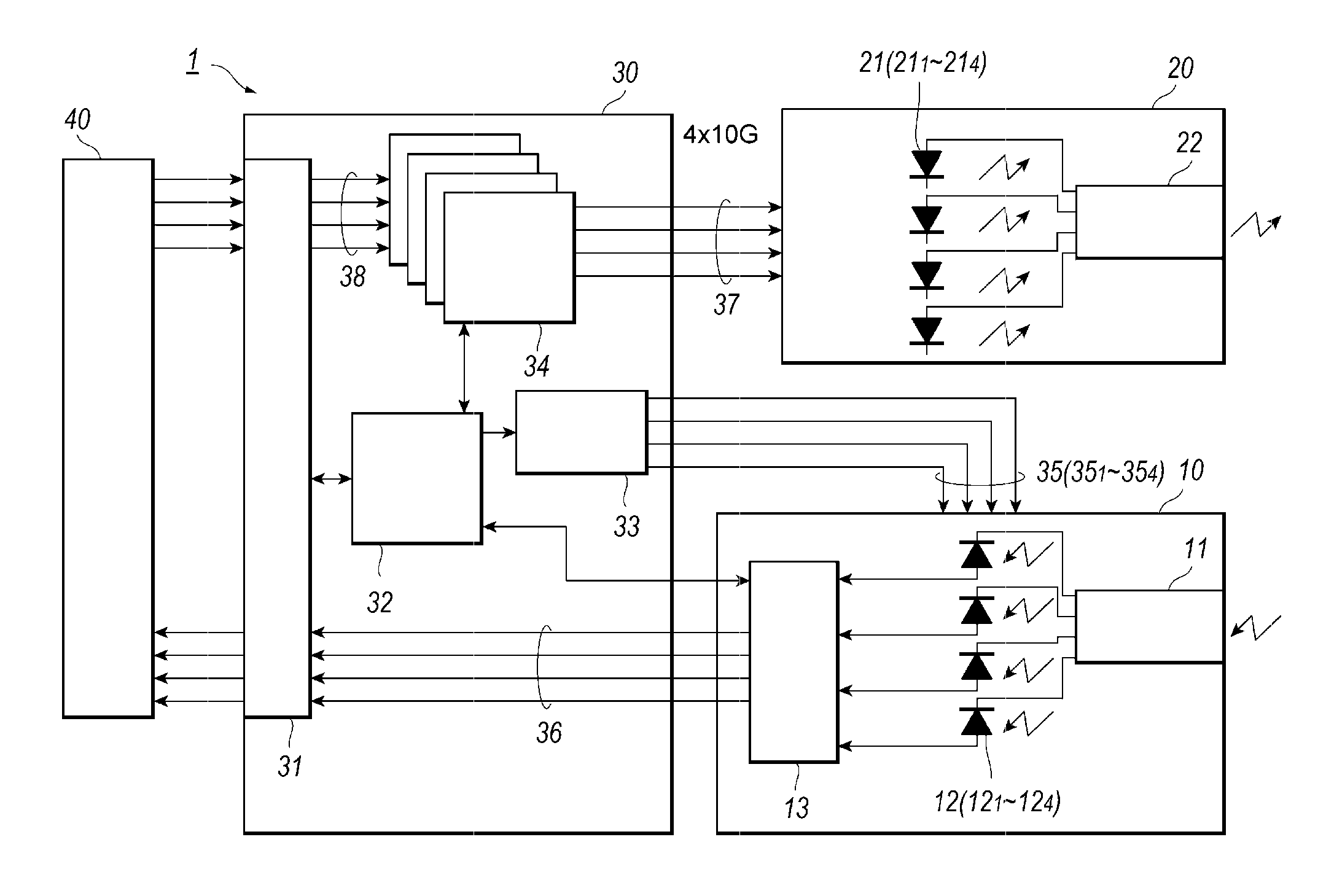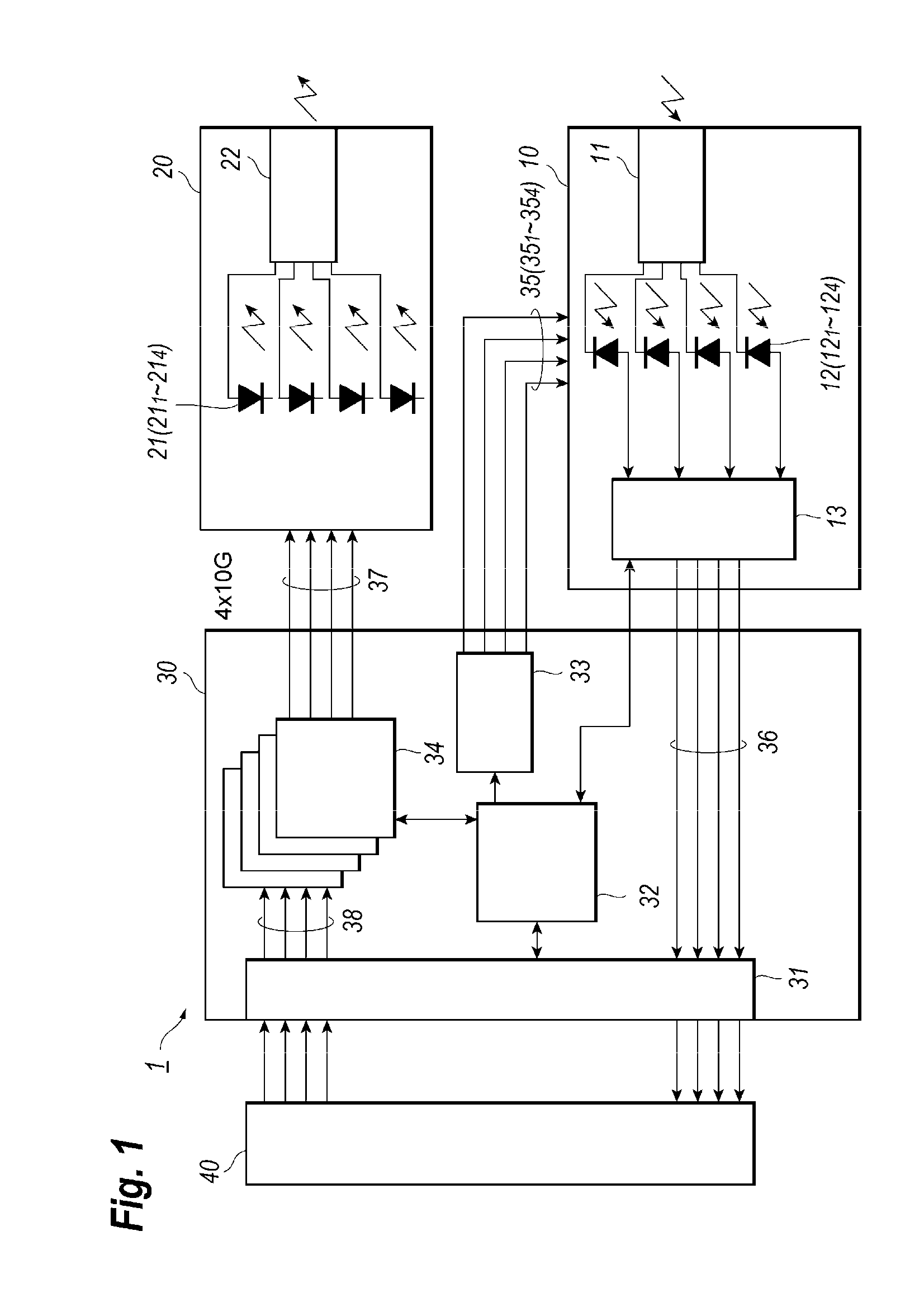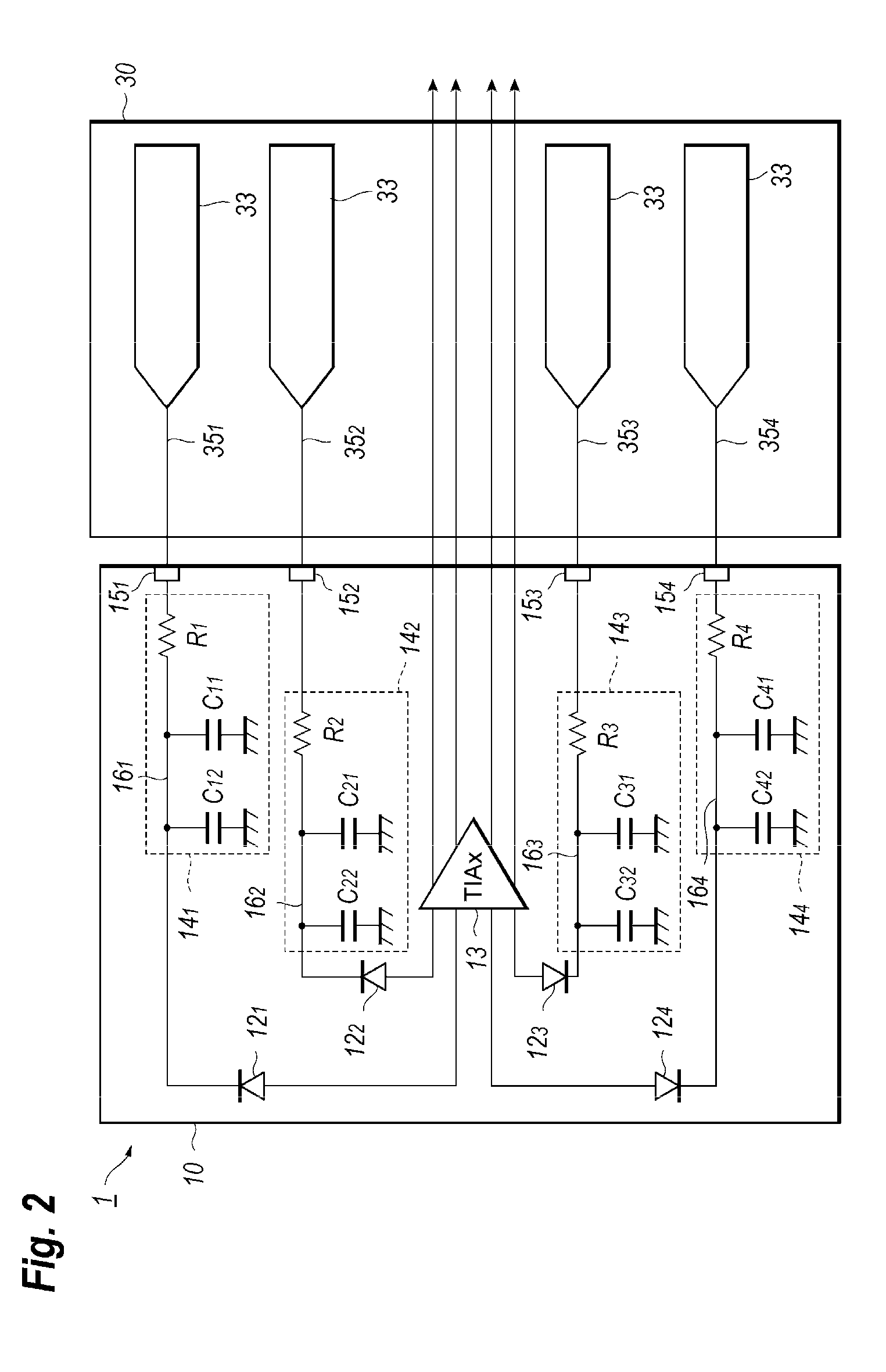Optical transceiver outputting wavelength multiplexed signal and receiving another wavelength multiplexed signal
a transceiver and wavelength multiplexing technology, applied in the field of optical transceivers, can solve problems such as degrading the sensitivity of optical receivers
- Summary
- Abstract
- Description
- Claims
- Application Information
AI Technical Summary
Benefits of technology
Problems solved by technology
Method used
Image
Examples
first embodiment
[0015]FIG. 1 shows a functional block diagram of an optical transceiver according to an embodiment of the present application. The optical transceiver 1, which is a type of a pluggable optical transceiver plugged with a host system, shows transmission capacity of 40 Gbps by wavelength multiplexing four (4) optical signals having respective wavelengths different from each other in a range of 1.3 μm. The description below concentrates on an optical transceiver of 40 Gbps, but the same description may be applicable to another type of an optical transceiver having, for instance, 100 Gbps transmission speed. Specifications including outer dimensions and electrical interfaces are defined by a multi-source agreements (MSAs) called as QSFP+ (Quad Small From factor Pluggable) or CFP (Centum Form factor Pluggable).
[0016]The optical transceiver 1 includes an optical receiver module (hereinafter denoted as Rx module) 10, an optical transmitter module (hereinafter denoted as Tx module) 20, and a...
second embodiment
[0035]FIG. 4 shows a circuit diagram of an Rx module 10A and the PCB 30A according to the second embodiment of the present application. The Rx module 10A, and the PCB 30A of the second embodiment has a feature that the Rx module 10A provides, in addition to the first to fourth external bias lines 16n for the respective PDs 12n, a dummy unit 19 including an internal dummy line 17, a dummy terminal 18, and the PCB 30A provides an external dummy line 36 which is put between the signal lines 37 for the Tx module 20 and the first bias line 351 in the outside of the Rx module 10A. That is, the external dummy line 36 is arranged between the signal lines 37 for the Tx module 20 and the first external bias line disposed closest to the signal line 37. The first to fourth bias lines 35n are arranged closer to the signal line 37 in this order. Accordingly, the external dummy line 36 is most likely to be influence by the EMI noise due to the switching of large currents in the signal line 37, and...
PUM
 Login to View More
Login to View More Abstract
Description
Claims
Application Information
 Login to View More
Login to View More - R&D
- Intellectual Property
- Life Sciences
- Materials
- Tech Scout
- Unparalleled Data Quality
- Higher Quality Content
- 60% Fewer Hallucinations
Browse by: Latest US Patents, China's latest patents, Technical Efficacy Thesaurus, Application Domain, Technology Topic, Popular Technical Reports.
© 2025 PatSnap. All rights reserved.Legal|Privacy policy|Modern Slavery Act Transparency Statement|Sitemap|About US| Contact US: help@patsnap.com



